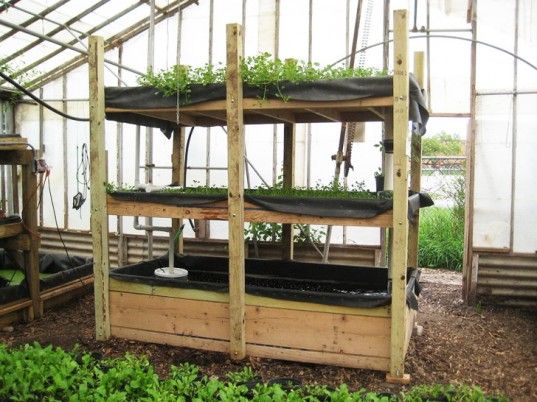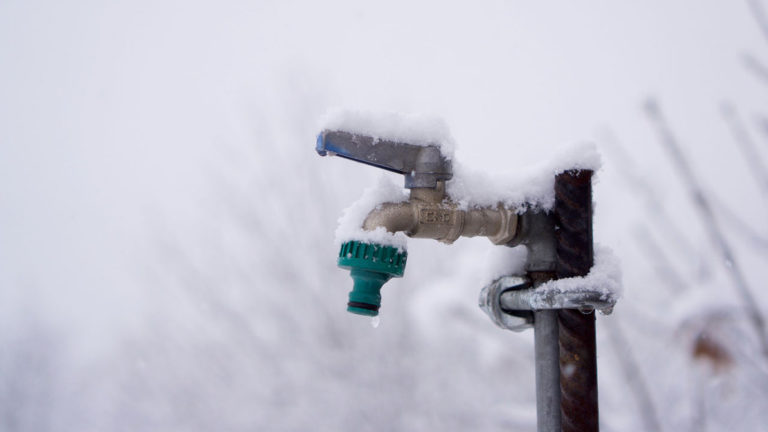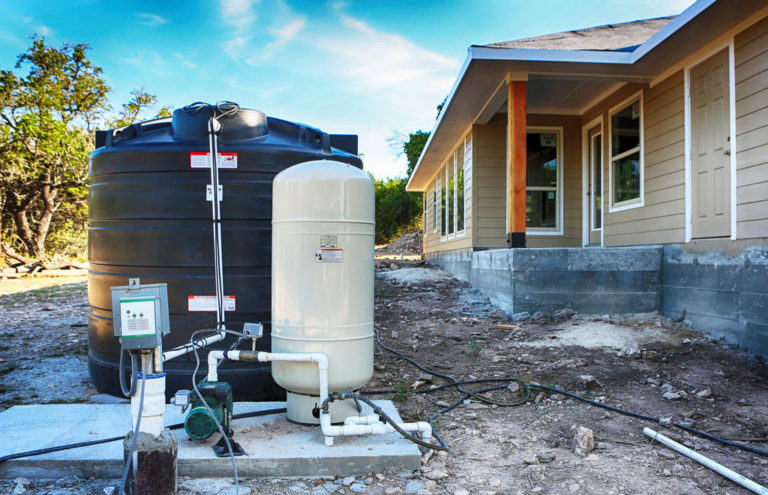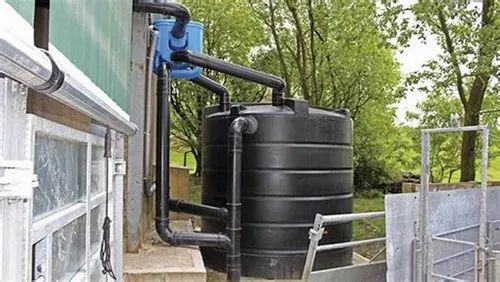Want to grow your own food year-round without relying on store-bought supplies?
Look no further than building a DIY wooden aquaponics system!
With just a few basic tools and materials, you can create a self-sustaining ecosystem that uses recirculating water and nutrient-rich fish waste to fertilize your crops.
Not only does this method reduce waste and conserve resources, but it also produces healthier plants with higher yields.
We’ll take you step-by-step through the process of building a DIY wooden aquaponics system that will help you achieve year-round gardening success!
Plan your system
Before you start building, decide on the scale of your system and what types of plants you want to grow. Research different aquaponic designs and choose one that fits your needs and skill level.
The first step is to decide on the scale of your system, considering factors such as the amount of space you have available, your budget, and the number of plants you want to grow.
This will help you determine the size and complexity of your system, as well as the types of plants you can grow.
Next, research different aquaponic designs to find one that fits your needs and skill level.
There are many different types of aquaponic systems, ranging from small, backyard systems to large-scale commercial operations.
Choose a design that is appropriate for your scale and goals, and that utilizes the types of plants you want to grow.
For example, if you’re interested in growing leafy greens and herbs, you may want to consider a raft system or a nutrient film technique (NFT) system.
Planning your system also involves considering the specific needs of the plants you want to grow.
Different plants have different requirements for water temperature, pH, and nutrient levels, so it’s important to research the specific needs of your chosen crops and design your system accordingly.
Think about the location and layout of your system, including factors such as lighting, ventilation, and access to water and electricity.
By carefully planning your aquaponics system, you’ll be well on your way to creating a thriving and productive system that provides fresh, healthy produce all year round.
Choose the right wood
Look for durable, rot-resistant woods like cedar, cypress, or redwood. These woods are less likely to rot or decay over time and can withstand exposure to water.
When selecting the right wood for your outdoor project, it’s essential to choose a durable and rot-resistant species.
Cedar, cypress, and redwood are all excellent options that can withstand exposure to water and resist decay.
Cedar is known for its natural resistance to rot and insect damage, making it an ideal choice for outdoor furniture and decking.
Cypress is also resistant to rot and decay, and its distinctive scent can help deter pests.
Redwood is another excellent choice, with its dense grain and high tannin content providing natural protection against rot and insects.
By choosing one of these durable woods, you can ensure that your outdoor project will last for years to come, even in harsh weather conditions.
Build the frame
Use your chosen wood to build a sturdy frame for your system. This will be the foundation for the rest of your aquaponic components.
Building the frame of your aquaponic system using your chosen wood is a critical step that will provide the foundation for the rest of your components.
The frame should be sturdy and well-constructed to ensure the stability and longevity of your system.
When building the frame, it’s important to use straight and stable wood pieces that can withstand the weight and stress of the water and plants.
Use wood screws or nails to secure the frames, and make sure they are tightly attached to prevent any movement or shifting over time.
The frame should be designed to support the weight of the grow beds, pumps, and other components, as well as to provide adequate space for the plants to grow.
By building a sturdy frame, you’ll be creating a solid foundation for your aquaponic system that will last for years to come.
Add the biofilter
The biofilter is an essential component of an aquaponic system, as it converts ammonia from fish waste into nitrates for plant growth. Use a combination of lava rocks and biological filter media to create a biologically active filter.
Adding a biofilter to your aquaponic system is a important step towards creating a thriving and sustainable ecosystem.
The biofilter is responsible for converting ammonia from fish waste into nitrates, which are essential for plant growth.
To create a biologically active filter, use a combination of lava rocks and biological filter media.
Lava rocks provide a large surface area for beneficial bacteria to grow and thrive, while biological filter media, such as ceramic rings or bio balls, offer additional surface area for bacterial colonization.
These bacteria are responsible for converting ammonia into nitrates, so it’s important to ensure that the filter media is well-colonized.
To do this, fill the filter with a mix of lava rocks and biological filter media, and then add water from the fish tank to the biofilter.
Allow the filter to cycle for several weeks before introducing fish, ensuring that the bacteria have had enough time to establish themselves.
With a properly functioning biofilter, you’ll be able to sustainably raise healthy fish and produce bountiful crops of plants.
Install the pump and plumbing
Choose a high-quality submersible pump and plumb the system with food-grade PVC pipes. Make sure the plumbing is properly sized for your system to ensure efficient water circulation.
Installing a high-quality submersible pump and plumbing the system with food-grade PVC pipes is a important step in creating a successful hydroponics system.
The pump should be chosen based on the specific needs of your system, such as the size of your growing area, the number of plants, and the desired flow rate.
Look for a pump that is durable, efficient, and easy to maintain.
When selecting PVC pipes, ensure that they are food-grade and suitable for hydroponic use.
Proper sizing of the pipes is essential for efficient water circulation, as oversized pipes can lead to energy waste and undersized pipes can cause insufficient water delivery to your plants.
Use appropriate fittings and connectors to secure the pipes and prevent any leaks or damage to the system.
By investing in a reliable submersible pump and high-quality PVC pipes, you can ensure a successful and thriving hydroponics system.
Add the grow beds
Build or purchase grow beds that fit inside the frame and are appropriate for the size of your system. These beds should be filled with a suitable growing medium like rockwool or expanded clay pebbles.
To establish a thriving hydroponic system, you must add grow beds that fit inside the frame and are suitable for the system’s size.
These beds should be filled with a high-quality growing medium, such as rockwool or expanded clay pebbles.
Rockwool is a popular choice for hydroponic systems because it provides excellent water retention and aeration properties, allowing roots to grow healthily.
Expanded clay pebbles, on the other hand, offer better drainage and air circulation, making them ideal for plants that require more oxygen.
When selecting grow beds, consider the system’s size and the space available for plant growth.
For instance, if you have a small hydroponic system, you may opt for shallow grow beds that fit more plants in a smaller space.
Conversely, larger systems can accommodate deeper grow beds with more space for root development.
Before filling the grow beds with the chosen growing medium, make sure the system is fully assembled and all components are functioning properly.
This includes checking the pH and EC levels of the nutrient solution, ensuring the circulation pump is working correctly, and verifying that the lighting and temperature controls are set up according to your plants’ needs.
Proper preparation will help ensure a successful grow and maximize the potential of your hydroponic system.
Cycle the system
Before adding fish or plants, cycle the system to establish a healthy biofilter. This will involve adding a small number of fish and letting the system run for several weeks to allow the beneficial bacteria to grow.
Before adding fish or plants to your aquarium, it’s important to cycle the system to establish a healthy biofilter.
This step allows the beneficial bacteria to grow and thrive, which will help to break down waste products and maintain a clean and healthy environment for your aquatic friends.
To cycle the system, start by adding a small number of hardy fish, such as zebra danios or ghost shrimp, to the aquarium.
These fish can tolerate a small amount of ammonia and will help to feed the beneficial bacteria.
Next, add a small amount of food to the aquarium, such as flake or pellet food, to provide a source of nutrients for the bacteria.
It’s important to not overfeed the fish during this time, as excess food can cause an overgrowth of algae and other undesirable microorganisms.
Let the system run for several weeks, monitoring the water parameters regularly to ensure that the cycle is progressing as it should.
During this time, you may notice an increase in ammonia and nitrite levels, which is normal.
As the beneficial bacteria grow, they will begin to break down these waste products and maintain a healthy balance in the aquarium.
Once the cycle is complete, you can safely add more fish and plants to the aquarium, knowing that the system is now stable and able to support a thriving ecosystem.
Remember, cycling the system is a important step in setting up a successful aquarium, and it’s essential to follow this process to ensure the health and well-being of your aquatic pets.
Maintain and monitor the system
Once your system is up and running, make sure to regularly monitor water quality, perform routine maintenance, and make any necessary adjustments to ensure optimal growth and health of your plants and fish.
To ensure the optimal growth and health of your plants and fish, it is important to maintain and monitor your aquaponic system regularly.
This involves checking and adjusting various parameters such as water temperature, pH, ammonia, nitrite, and nitrate levels.
Regular monitoring of water quality will help you identify and address any issues before they become major problems.
Performing routine maintenance tasks such as cleaning the filters and replacing any worn-out parts will help keep your system running smoothly.
Proactive monitoring and maintenance will not only improve the health of your plants and fish but also extend the lifespan of your system.
By staying on top of your system’s performance, you can make any necessary adjustments to optimize growth and prevent any potential problems.
Remember to also keep accurate records of your system’s performance to track progress and make informed decisions for future improvements.
Regular monitoring and maintenance are essential for a successful and thriving aquaponic system.
Want More? Dive Deeper Here!
Hey there! If you’re the type who loves going down the rabbit hole of information (like we do), you’re in the right spot. We’ve pulled together some cool reads and resources that dive a bit deeper into the stuff we chat about on our site. Whether you’re just killing time or super into the topic, these picks might just be what you’re looking for. Happy reading!






